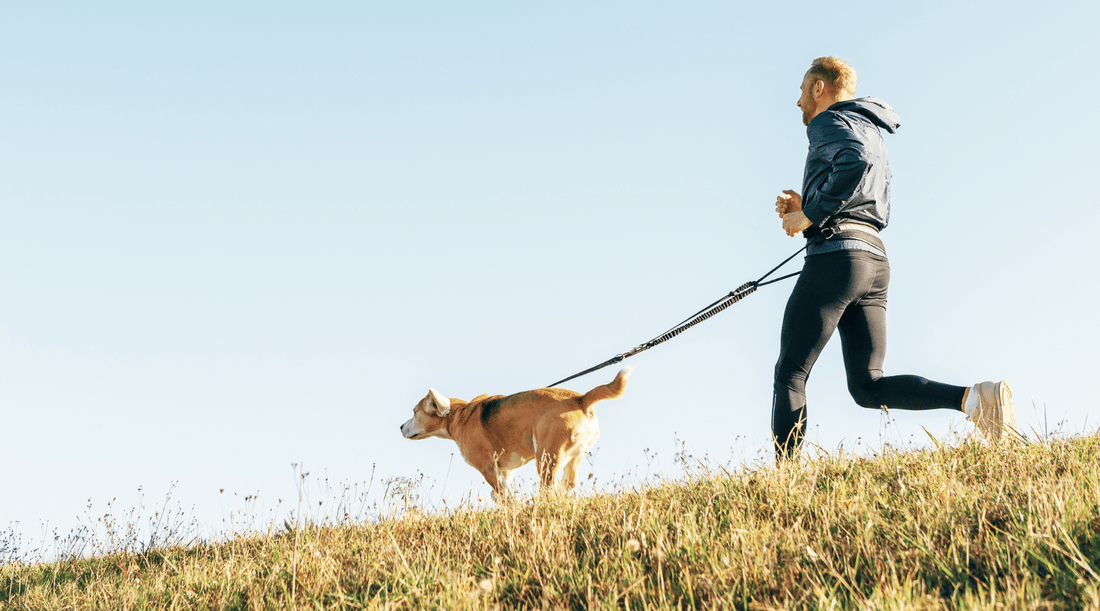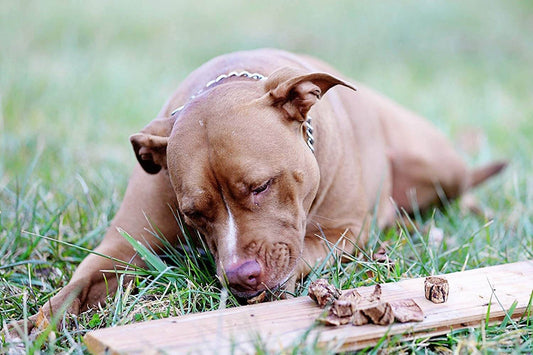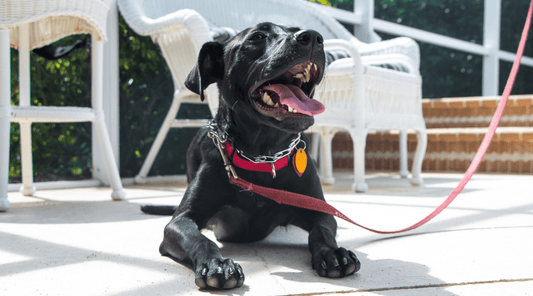
Running With Your Dog (And Why Dogs Make the Best Running Buddies)
Dawn Miller Apr 08, 20254 Minute ReadI used to run solo. Just me, the sound of my sneakers hitting the pavement—and the occasional audiobook. But these days? I've got a four-legged running buddy who’s turned my morning jogs into a whole new adventure.
Her name is Pixie. You may already know her if you've been following our stories for a while. She's the terrier with the boundless energy like a toddler who just ate their first piece of birthday cake. So, I thought, why not? Some dogs, like Pixie, seem to have an endless supply of pep in their paws.
But I quickly found out that running your dog isn't as easy as clipping on a leash and hitting the trail. Even leash-trained dogs like Pixie need some extra instruction to make it work.
Why Run with Your Dog?
Running with your dog is about more than both of you burning some calories. It's a bonding experience. For most dogs, running with you is exhilarating. They're doing what they've been bred to do.
Running with a companion like a dog can also make runs more memorable and enjoyable.
It's not just about you anymore. You see how much your dog loves running. And you want to get out there for them... and you.
You'll both get those cardiovascular benefits and enjoy that runner's high. Plus, you'll stay safer. Even a little terrier like Pixie is a deterrent when you're running in secluded areas.
But one of the most incredible things about running with Pixie is her sense of adventure. Her dog senses allow her to sniff out new trails I wouldn't even notice, expanding my world with new sights and experiences.
How to Start Running With Your Dog
1. Check Their Fitness Level
Not every dog is built to be a runner. And even if they are, you’ve got to be sure they’re in shape to handle it.
High-energy breeds like Border Collies, Labrador Retrievers (like my Bruno), and, yes, even my zippy little terrier Pixie tend to thrive on regular runs. But dogs with short snouts (like Pugs and Bulldogs) or heavy builds (like Mastiffs) aren’t always suited for intense exercise. The former often develops breathing problems when overactive, while the latter puts a lot of weight on their joints. They need extra joint supplements and fewer runs.
And puppies? Well. Better to hold off until their bones and joints are fully developed.
2. Build Up Endurance Gradually
I don't know about you. But when I discover a new passion, I tend to overdo it. And in the case of running, my feet would pay for it. So, I had to intentionally ease into it so she didn't suffer the same fate.
We started with short walks and built up to jogging. The first time I took Pixie out, we jogged for about five minutes before she started looking at me like, What kind of prank is this?
Now, we can go a couple of miles, no problem.
Develop a routine and stick with it. This allows their body to adapt to the faster pace. Every dog walk with Pixie isn't a run, and she knows the difference.
3. Train Leash Etiquette
If your dog pulls on the leash like a plow horse, then running isn't going to work. Even at middle age, Pixie can run faster because she's built for it. While she does help me keep pace, that's a speed I wouldn't be able to manage for more than a few minutes.
In order to run with a dog, they need to be willing to run with you. Running with dogs is a learned behavior—for both of you.
I had to teach Pixie to pace herself so we can run together for longer.
We practiced commands like "heel" and "leave it" to stay in tune.
With the "heel" command, I trained Pixie to walk (and eventually run) by my side. Your dog learns to keep pace with you by trying to keep their front paws aligned with your heels, which puts their head right next to you. To teach heel, use a high-value treat to guide them into position. Then give them a treat as they stay in position.
It becomes a game as they begin to associate the treat with keeping pace. Keeping pace starts to feel rewarding, and you can then pick up the pace slowly.
If "heel" seems a little old-fashioned, "let's go" is a command used similarly.
"Leave it" is critical because Pixie has never seen a squirrel she doesn't want to chase. If she gets distracted, I tell her to "leave it."
To learn more about how positive reinforcement training can enhance your bond with your dog, sign up for our 7-Day Dog Training Challenge
Best Dog Breeds for Running
If you're headed to the animal shelter right now to adopt a running buddy, I suggest you look for one of these breeds:
- Border Collies
- Labrador Retrievers
- Australian Shepherds
- Mid-sized terriers like Pixie
- German short-hair
- German shepherds (mixed breed preferably. Sadly, pure-bred often have joint issues.)
- Golden Retriever
- Beagles
Of course, every dog is an individual, so watch for signs of pain or reluctance. These breeds generally love—and I mean LOVE—running, so if they don't, something's up.
Dogs that Love Leisurely Walks Instead
- Pugs
- Bulldogs
- Basset Hounds
- Dachshunds
- St. Bernards
Safety Tips for Running With Dogs
Whether you’re training for a 5K or just jogging around the block, put safety first.
1. Get the Best Leash for Running
A running leash is 4-6 feet, allowing your dog to stay close and to avoid leash accidents for either of you. Some leashes have two handles, one mid-leash, allowing you to adjust for different walk/run paces. This one on Amazon even has a pouch on it you can use for treats!
2. Consider a Walking Harness
A walking harness with a front clip works excellently for runs because it keeps the leash from rubbing along the side of their head as they run. This one is a great option on Amazon.
3. Check the Weather
Dogs don't sweat. They pant. And they can't cool themselves quickly. While dogs and humans acclimate to the temperatures they usually run in, we can overheat in abnormally hot weather.
Hot asphalt can also burn paws. If you wouldn't run barefoot on that blacktop, your dog shouldn't either. On hot days, run in the early morning or late evening when it’s cooler.
Then you might alternate when it's brutally cold. Midday is the warmest.
4. Bring Water
Always carry water for your dog unless you know there's a dog-friendly fountain on the route.
5. Watch Their Paws
Check their paws after each run, especially if you’re jogging on concrete or gravel. Seek out smoother surfaces or dirt trails when possible.
Pixie loves our trail runs. We even run off-leash.
6. Fuel Your Dog’s Run (And Recovery)
Running dogs need a high-protein diet. Kibble is only around 18% protein, but a dog training for a marathon needs 22% or more.
I supplement Pixie's kibble diet with a meaty beef marrow dog bone and high-protein dog treats, like K9 Connoisseur's single-ingredient beef lung dog training bites.
All-natural grass-fed beef dog bones and dog treats are also rich in anti-inflammatory omega 3 fats and glucosamine to keep joints healthy on the trail and off.
Available On:


Disclosure: This article may contain affiliate links, which means we may earn a small commission if you make a purchase through these links—at no extra cost to you. We only recommend products we trust and believe will benefit you and your K9.



